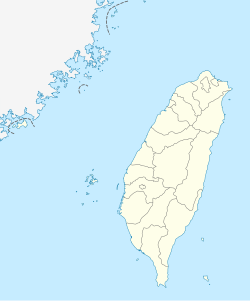Top Qs
Timeline
Chat
Perspective
Yami language
Austronesian language spoken on Orchid Island, Taiwan From Wikipedia, the free encyclopedia
Remove ads
The Yami language (Chinese: 雅美語), also known as Tao (Chinese: 達悟語), is a Malayo-Polynesian and Philippine language spoken by the Tao people of Orchid Island, 46 kilometers southeast of Taiwan. It is a member of the Ivatan dialect continuum.
Yami is known as ciriciring no Tao 'human speech' by its native speakers. Some native speakers prefer the 'Tao' name.[1]
Remove ads
Classification

Yami is the only native language of Taiwanese indigenous peoples that is not a member of the Formosan grouping of Austronesian; it is one of the Batanic languages also found in Batanes province of northern Philippines, and as such is part of the Malayo-Polynesian branch of Austronesian.
Phonology
Yami has 20 consonants and 4 vowels:[2]
Vowels
- /o/ can be heard as [ʊ] after labial stop consonants.
Iraralay Yami, spoken on the north coast, distinguishes between geminative consonants (e.g., opa 'thigh' vs. oppa 'hen' form one such minimal pair).[3]
Consonants
- /k ʁ/ can also be heard as sounds [q ɦ] when between vowel /a/ intervocalically.
- Sounds /n l ʂ/ can be heard as sounds [ɲ ɮ ʃ] before /i/.
Remove ads
Grammar
Summarize
Perspective
Pronouns
The following set of pronouns is found in the Yami language.[4]
Verbs
The following list are verbal inflections found in Yami.[5]
- Dynamic intransitive
- -om-/om- (subjunctive: N-)
- mi-
- ma-
- maN-
- maka-
- maci-/masi-/macika-/macipa-
- Stative
- ma- (subjunctive: a-)
- ka- ... -an (subjunctive: ka- ... -i)
- Dynamic
- pi-
- pa-
- paN- (subjunctive: maN-)
- paka- (subjunctive: maka-)
- paci- (subjunctive: maci-)
- Transitive
- -en (subjunctive: -a)
- -an (subjunctive: -i)
- i- (subjunctive: -an)
- Stative functioning as transitive
- ma- (subjunctive: a- ... -a)
- ka- ... -an (subjunctive: a- ... -a)
Affixes
The following is a list of affixes found in Yami.[6]
- icia- 'fellows such and such who share the same features or fate'
- ikeyka- 'even more so'
- ika- 'feel such and such because...'
- ika- 'ordinal number'
- ipi- 'multiple number'
- ji a- 'negation or emphatic'
- ka- 'company, as ... as, abstract noun'
- ka- 'and then, just now, only'
- ka- 'stative verb prefix reappearing in forming transitive verbs'
- ka- (reduplicated root) 'very'
- ka- (reduplicated root) 'animals named after certain features'
- ka- ... -an 'common noun'
- ma- ... -en 'love to do such and such'
- mapaka- 'pretend to be such and such'
- mapi- 'do such and such as an occupation'
- mi-/mala- 'kinship relationships in a group of two or three'
- mika-/mapika-/ipika- 'all, gradually, one by one'
- mala- 'taste or look like...'
- mipa- 'getting more and more...'
- mipipa- 'even more...'
- mapi-/mapa-/pa- ... -en/ipa- 'causative verb affixes'
- ni- 'perfective'
- ni- ... na 'superlative'
- noka- 'past'
- noma- 'future (remote)'
- sicia- 'present'
- sima- 'future (proximal)'
- tey- 'direction'
- tey- 'very, too'
- tey- (reduplicated root) 'amount allocated to each unit
Remove ads
Vocabulary
This section needs additional citations for verification. (September 2024) |
Cognates with Philippine languages
Japanese loanwords
Chinese loanwords
Remove ads
See also
References
Sources
Further reading
External links
Wikiwand - on
Seamless Wikipedia browsing. On steroids.
Remove ads


